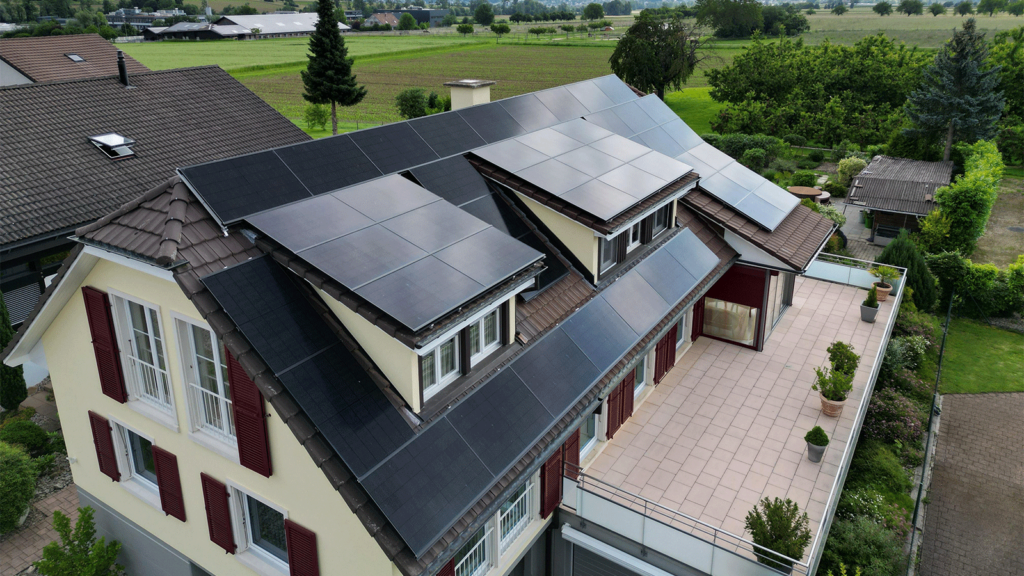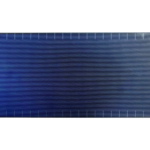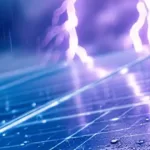Table of Contents
Introduction
Busbars are like the skeleton of a photovoltaic (PV) cell, supporting the entire cell to generate electricity. Within a crystalline silicon cell, the current generated is primarily extracted through metal electrodes, which can be divided into main busbars and auxiliary busbars (also known as fine busbars). The main busbars are primarily used for current collection and series connection of the auxiliary busbars, while the auxiliary busbars are used to collect photogenerated carriers.
Reviewing the entire development process, it is evident that the technology for PV busbars has evolved rapidly, with iteration cycles generally maintaining a pace of 2-3 years. The major stages include the transition from 4BB and 5BB to MBB (Multi-Busbar, with 9-15 busbars), followed by SMBB (Super Multi-Busbar, with 16 or more busbars), and finally to 0BB (Zero Busbar, with no main busbars).
What is Multi-Busbar (MBB) Technology?
In the photovoltaic (PV) field, Multi-Busbar (MBB) technology is an important method for improving the efficiency of solar cells. By increasing the number of busbars on the cell surface, MBB technology significantly enhances the performance and reliability of the cells. Traditional PV cells typically use 2 to 5 busbars, while MBB technology employs 9 or more busbars.
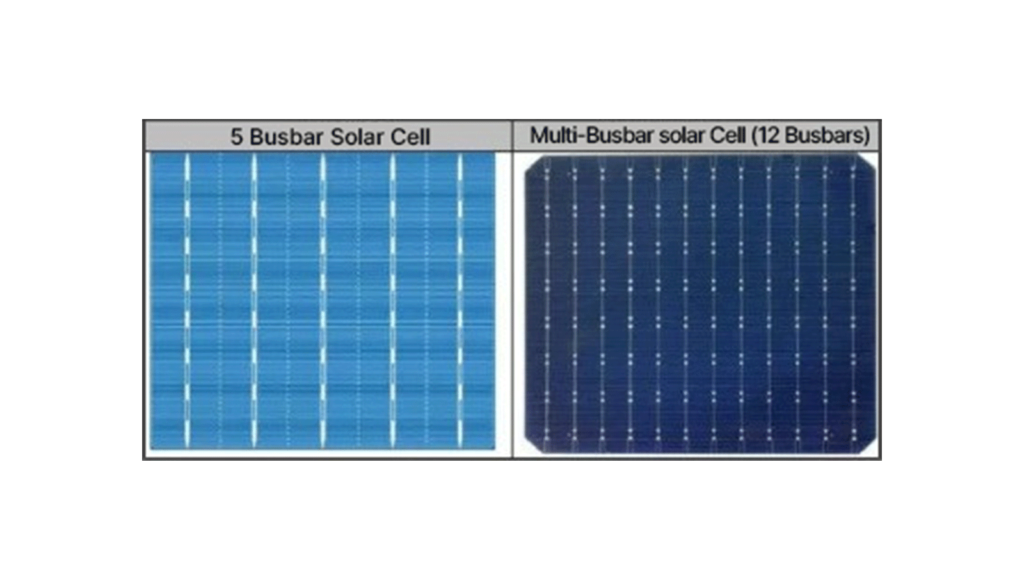
Characteristics and Main Advantages of MBB (Multi-Busbar) Technology
1.Increased Number of Busbars
MBB technology features more busbars evenly distributed across the cell surface, typically 9 or more. These busbars are used to collect and conduct the photogenerated current. By dispersing the current, the current density on each busbar is reduced, which lowers ohmic losses (resistive losses) and improves the fill factor and overall efficiency of the cell.
2.Enhanced Mechanical Strength
The presence of more busbars enhances the mechanical strength of the cell to some extent, reducing the risk of damage caused by stress during manufacturing, transportation, and installation.
3.Improved Hot-Spot Effect
The MBB structure helps to distribute the current more evenly, reducing the hot-spot effect, thereby enhancing the long-term reliability and performance of the modules.
4.Thin Busbar Design
The increase in the number of busbars allows for a reduction in the width of individual busbars. The thin busbar design minimizes the shading area on the surface of the photovoltaic cell, allowing more light to reach the silicon surface and increasing the photoelectric conversion efficiency.
5.Manufacturing Process
The application of MBB technology requires precise screen printing processes and advanced electroplating techniques to ensure the high accuracy and consistency of multiple thin busbars. This often necessitates corresponding process improvements and equipment upgrades during cell manufacturing.
Currently, multi-busbar technology is widely used in the field of crystalline silicon solar cells and has become an important means to improve cell performance and reduce costs.
SMBB: Following the Mass Production of TOPCon Cells
With the emergence of new cell technologies such as TOPCon and HJT, the soldering machine process has also upgraded from MBB to SMBB (Super Multi-Busbar). SMBB can be considered an enhanced version of MBB technology. By using finer busbars, SMBB reduces the amount of silver paste required, achieves less shading, and shortens the current transmission distance. This effectively lowers the series resistance and further increases the cell’s tolerance to micro-cracks, broken busbars, and fractures, thereby improving reliability.
SMBB technology typically features 15-25 busbars, meaning each cell has 15-25 busbars printed on it. Currently, TOPCon cells often adopt the SMBB scheme, and some leading heterojunction (HJT) companies have also achieved mass production with 18+ busbars.
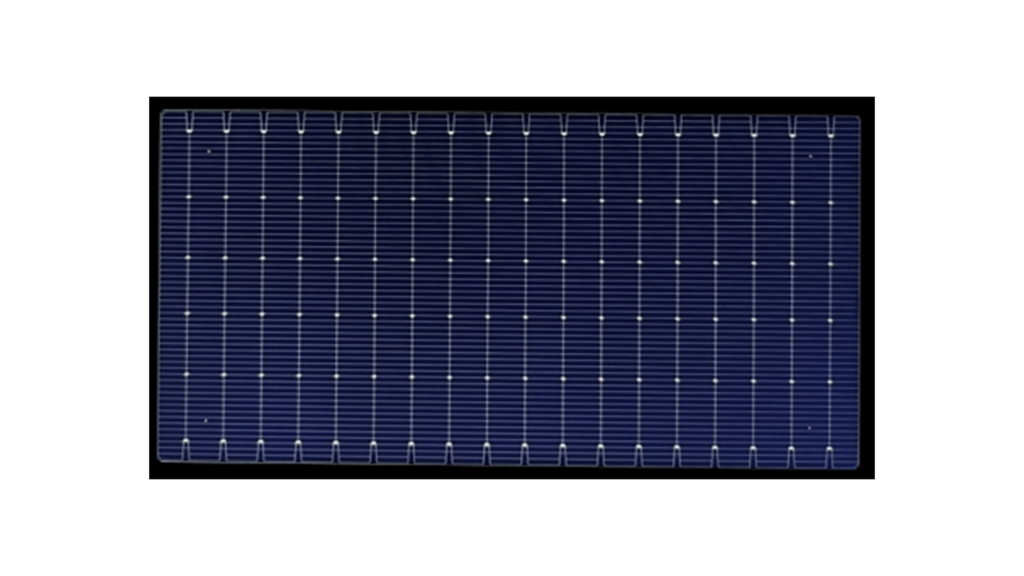
What is Zero Busbar (0BB) Technology?
Zero Busbar (Busbarless) Technology is an emerging photovoltaic (PV) cell manufacturing technique that enhances solar cell efficiency and reduces costs. In crystalline silicon solar cells, busbars are metal lines used to collect current, typically involving multiple main busbars. Zero Busbar technology eliminates these main busbars and instead uses finer metal lines or conductive materials to collect current.
In the 0BB process, main busbars are removed during the metal electrode screen printing stage, and the width and spacing of the auxiliary busbars are optimized. The advantages of 0BB include cost reduction, decreased silver usage, and increased efficiency.
Advantages of 0BB Technology
1.Reduced Shading: 0BB technology minimizes shading caused by busbars, thereby improving the efficiency of the PV cells.
2.Increased Current Collection: The use of finer metal lines or conductive materials increases the current collection area, further enhancing cell efficiency.
3.Cost Reduction: 0BB technology reduces the number and complexity of busbars, lowering the production costs of the cells.
4.Improved Reliability: By eliminating the risk of busbar breakage or other related issues, 0BB technology enhances the reliability of the cells.

Key Benefits in the 0BB Production Process
1.Cost Savings: Compared to SMBB, 0BB can save about 30% of silver paste, encapsulant, and 10% of soldering ribbon in the cell manufacturing stage.
2.Higher Module Power: The use of low-temperature soldering processes and ultra-fine, ultra-flexible soldering ribbons helps to improve the welding yield rate of modules. These ultra-fine, ultra-flexible ribbons can collect more current and shorten current transmission distances, resulting in higher module power output.
Zero Busbar technology represents a significant advancement in solar cell manufacturing, offering a promising path toward more efficient and cost-effective solar energy solutions.
According to the “2024-2029 China 0BB (Zero Busbar) Industry Market In-depth Research and Development Prospect Forecast Report” released by New Sijie Industry Research Center, 0BB technology, as an upgrade to SMBB technology, is currently in the early stages of industrialization in China. However, due to its potential for cost reduction, efficiency improvement, and reduced silver usage, it is expected to replace SMBB technology in the future and be widely applied in the photovoltaic (PV) field.
Since 2023, several Chinese companies have invested in the research of 0BB technology, cells, soldering ribbons, modules, or equipment. These companies include Risen Energy, Akcome Technology, Tongwei Solar, Autowell, Jinergy Photovoltaic, Suzhou Wattway, Shenzhen Lightway, Lead Intelligent, and Debont Technology.
0BB technology has already achieved mass production application. In April 2023, Risen Energy successfully launched the first batch of heterojunction 0BB cells, marking the first application of 0BB technology on a gigawatt-scale production line. As the technology matures and more companies enter the market, the mass production process of 0BB will accelerate in 2024, increasing its market penetration. It is estimated that by 2025, the market size for 0BB equipment will reach 10 billion yuan, and the market size for 0BB soldering ribbons will reach 31 billion yuan.
Industry analysts from New Sijie indicate that among heterojunction (HJT), TOPCon, and PERC cells, the need for cost and silver reduction is most urgent for HJT cells. In 2022, China’s HJT cell production capacity exceeded 10GW, reaching around 55GW in 2023, and is expected to reach 150GW by 2025. With the rapid expansion of HJT cell production, the application scale of 0BB technology will further increase.
Conclusion
In the rapid development of photovoltaic technology, MBB, SMBB, and 0BB solar cell technologies are continuously evolving, bringing higher efficiency, lower costs, and more reliable performance.
MBB technology enhances the performance and mechanical strength of solar cells by increasing the number of busbars, reducing the hot-spot effect. SMBB technology further refines the busbar design, reduces silver paste usage, and improves the reliability and efficiency of the cells. 0BB technology eliminates the main busbars, optimizes the width and spacing of the auxiliary busbars, and achieves cost reduction and efficiency improvement.
The advancements in each of these technologies are driving the growth of the photovoltaic industry. In the future, as these technologies continue to mature and become more widespread, the efficiency and performance of solar cells will keep improving, making a greater contribution to the development of global renewable energy. The evolution of MBB, SMBB, and 0BB technologies is set to propel the photovoltaic industry to new heights.
Since 2008, Maysun Solar has been dedicated to producing high-quality photovoltaic modules that contribute to combating climate change. Our advanced technology in IBC, HJT, TOPCon, and balcony solar panels ensures exceptional performance and reliability, capable of withstanding harsh weather conditions for long-term operation. We have established offices and warehouses in multiple countries and built lasting partnerships with top installers to provide comprehensive support. For the latest quotes or any inquiries related to photovoltaics, feel free to reach out to us—we’re here to help!
Reference:
Comparison of Photovoltaic Cell MBB and 0BB Technology. (n.d.). Weixin Official Accounts Platform. Retrieved from [https://mp.weixin.qq.com/s/LEcWX7Xn__KIfaSRrKQNxA]
Jingge Photovoltaic. (n.d.). About MBB, SMBB, 0BB. Weixin Official Accounts Platform. Retrieved from [https://mp.weixin.qq.com/s/YaffevXIxhRpWoC52HeC3w]
Photovoltaic String Welding Machine: From Presence to Absence of Busbars, Process Upgrades Bring New Opportunities. (n.d.). Retrieved from [https://m.yicai.com/news/101833259.html]
Dialogue with JA Technology CTO Ouyang Zi: 0BB Modules Expected to Start Mass Production in Q3 This Year. (n.d.). Sohu.com. Retrieved from [https://www.sohu.com/a/786521047_121255906]
Recommended Reading:

Empowering Factories with Solar Energy A Strategic Tool for Controlling Production Electricity Costs
Commercial and industrial solar is becoming a key solution for factories to reduce electricity costs and hedge against price fluctuations. This article systematically analyzes its deployment models, cost advantages, and sustainable value pathways.

How Businesses Can Offset Carbon Taxes with Solar Power
This article analyzes the latest carbon tax policies and photovoltaic deduction strategies, helping European businesses legally reduce taxes, increase profits through solar investment, and achieve a win-win situation for both economy and environment.

Forecast and Response: Seizing the Next Decade’s Growth Dividend in Europe’s Commercial and Industrial Photovoltaics Market
Maysun Solar analyzes the growth trends of commercial and industrial photovoltaics in Europe over the next ten years, from policies and ESG to technological innovation, helping companies seize the initiative in the energy transition.

How to Calculate Solar System ROI and Optimize Long-Term Returns?
Solar power is becoming a key solution for businesses to reduce costs and improve efficiency. Accurately calculating ROI and optimizing long-term returns are essential to maximizing investment value.

Will Agrivoltaics Affect Crop Growth?
Agrivoltaics combines solar energy and agriculture to reduce up to 700 tons of CO₂ per MW, improve water use, and boost crop growth for sustainable farming.

6.5 Billion Loss Hits Photovoltaics: Reshaping or Elimination?
In 2025, the photovoltaic market may see a turnaround as some companies take early action. A €6.5 billion loss is driving businesses to explore new growth areas like energy storage and hydrogen. Which giants will break through? Industry transformation is accelerating!

